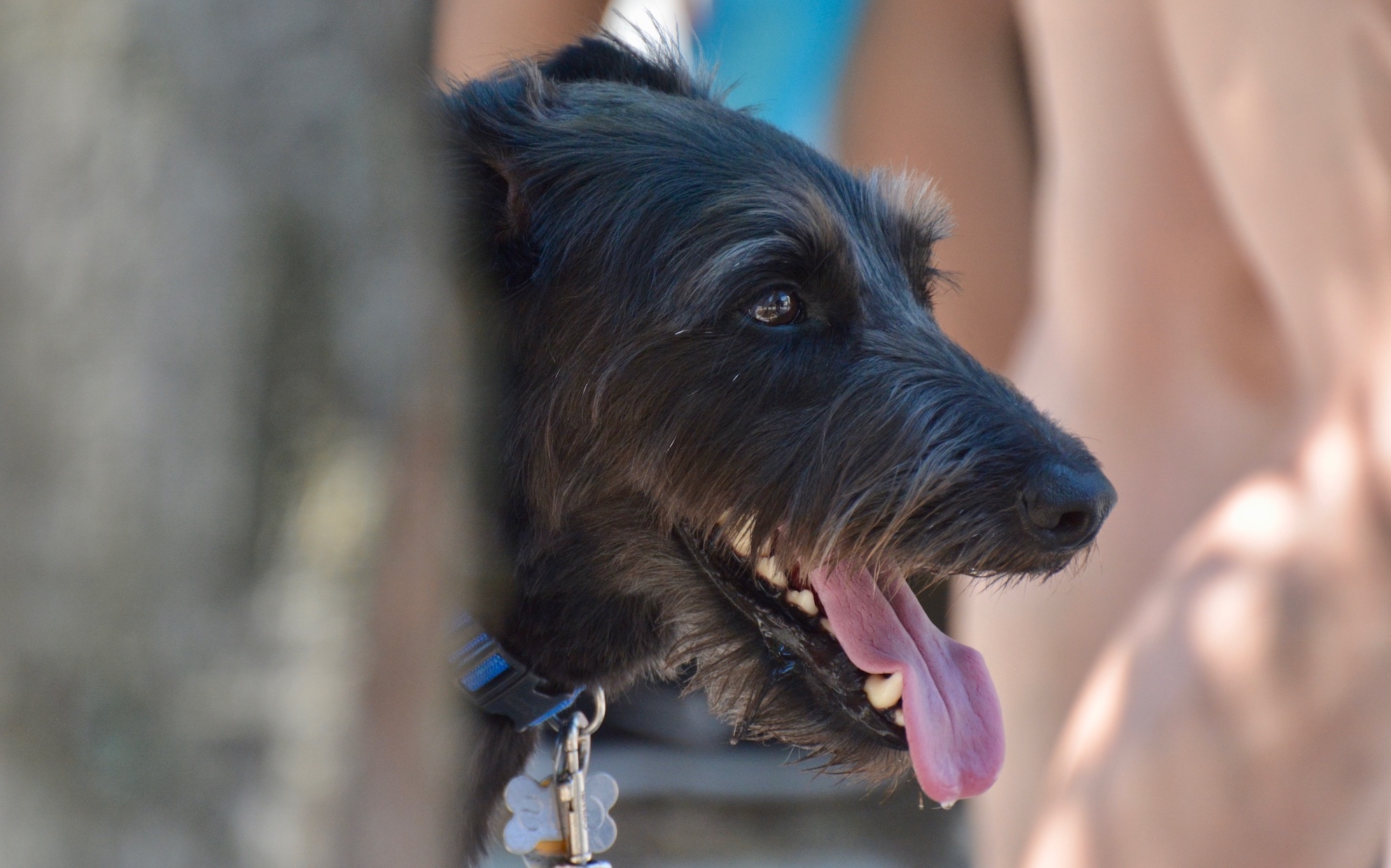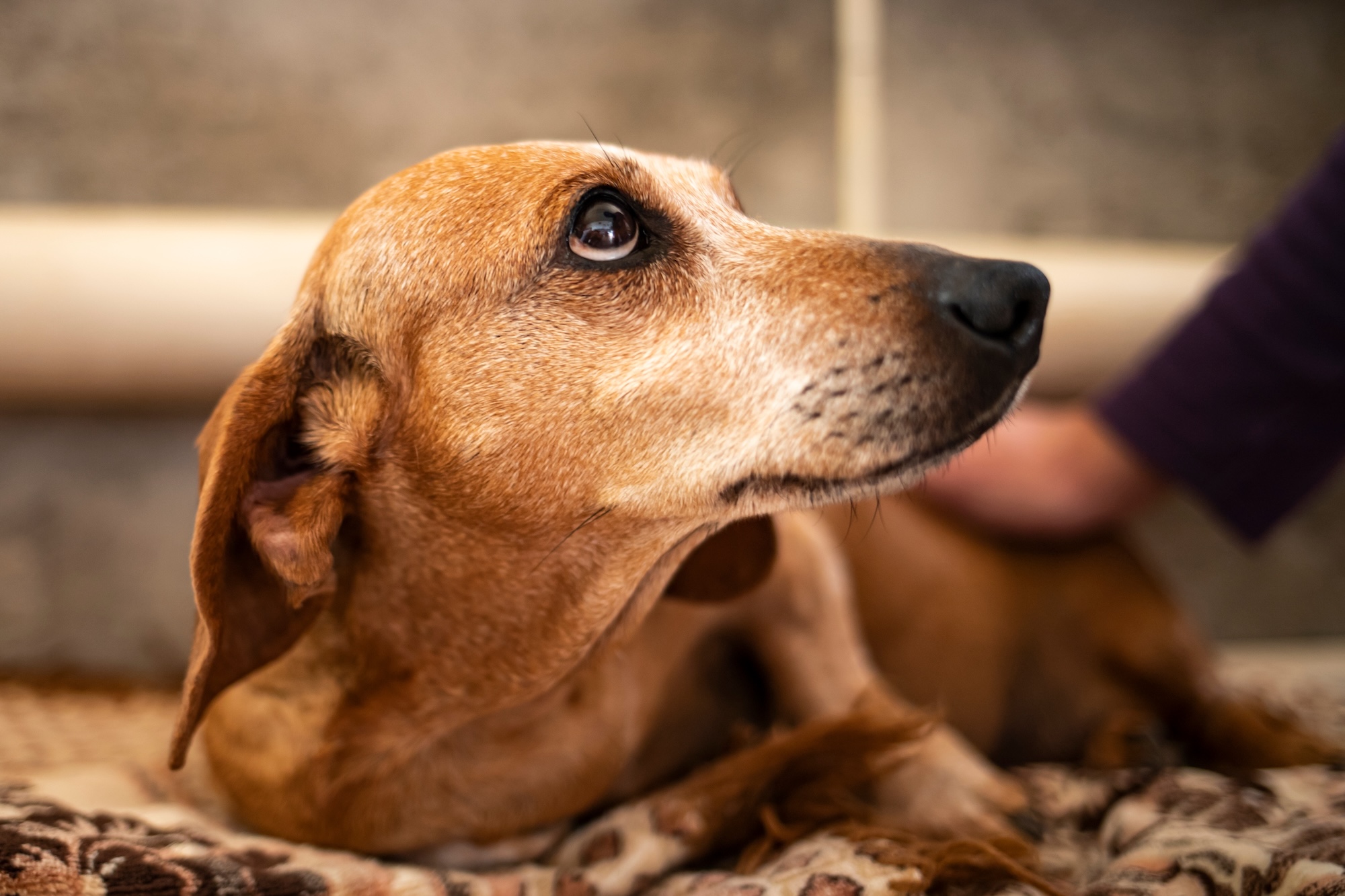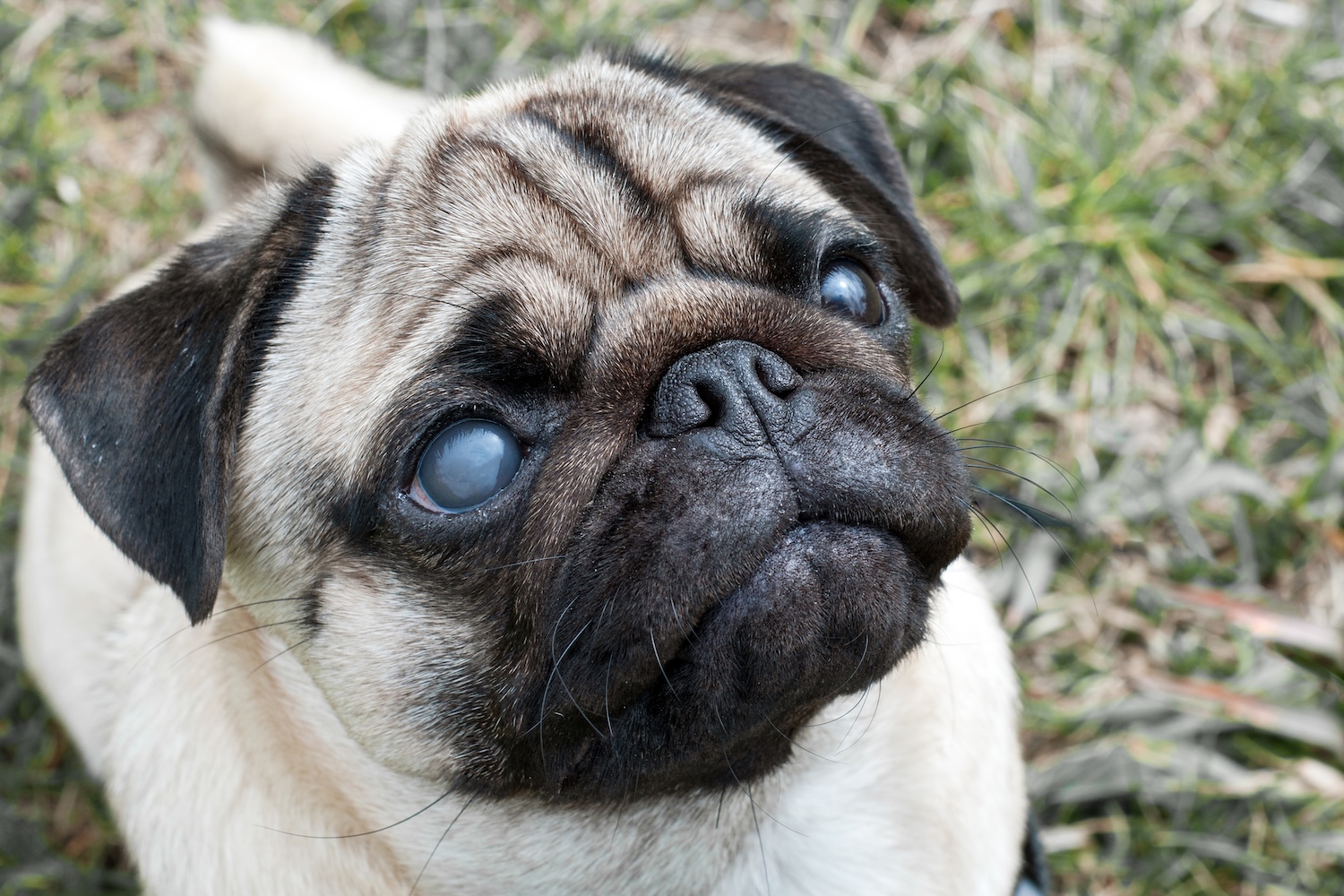Key points:
- Dogs can’t dissipate heat as well as humans can, so heat and humidity can be extra dangerous to them.
- Signs of overheating include excessive panting, drooling, and dark or bright red gums.
- Heatstroke can happen even when your dog is not running around. Don’t leave your dog outside in hot weather. Keep walks short. And never leave your dog in a car, even if you’ll be right back or it’s not that hot out.
- Don’t shave your double-coated dog; this can actually make them more prone to overheating, not less.
Most dogs love to spend time outside, whether that means hiking a nature trail or playing in a city park. But, as we get into the hottest months of the year, it’s crucial to remember that too much exertion on hot days can put them at risk for heatstroke—a potentially fatal condition.
Dogs have a harder time staying cool than people do, because their sweat doesn’t do much to help them dissipate heat. A recent University of South Wales study found that the risk of death for dogs increased by 10% on “extreme heat days”—those with a temperature of above 32 degrees Celsius (a bit below 90 degrees Fahrenheit). And a 2020 UK study suggested that climate change could be increasing heat-related risks to dogs.
In the 2020 study, researchers examined data from 900,000 veterinary visits in 2016, and found 395 confirmed “heat-related illness events.”
According to the study, age, weight, and skull shape were the biggest risk factors for heat illness. Dogs over 110 pounds, and over 12 years old, were more likely to suffer from the heat—as were brachycephalic breeds (dogs with shortened snouts and flat faces) like English bulldogs, Cavalier King Charles spaniels, French bulldogs, and chow chows. According to the study findings, these breeds were twice as likely to suffer heat illness compared to beagles, border collies, and other dogs with longer snouts.
But the good news is that there’s a lot you can do to keep your dog cool on hot days—while still making sure they have a fun, interesting life. Chris Equale says of his corgis, Hammy and Fiona: “It’s so important to keep their body temperatures down during the summer months, so we like to inject cooler options into their daily routines.”
As the weather continues to heat up, here’s what you should keep in mind about keeping your dog cool.

Warning signs that your dog is getting overheated
Dogs’ bodies don’t release excess heat as efficiently as humans’. While people have the ability to sweat from head to toe to cool their skin, dogs only do their version of sweating through their paw pads. Panting is the main way they release heat from their bodies.
When we spoke to Brian Collins, DVM, a veterinarian with the Cornell Riney Canine Health Center, for an article about whether dogs sweat, he told us: “People are fairly unique in their ability to sweat as much as they do, and that’s a very effective way for us to cool off. But for dogs, it’s a minor, almost negligible way to lose heat from the body.”
Keeping this in mind, it’s important to watch for signs that your dog is overwhelmed by the heat. These can include:
- Panting more heavily than usual
- Looking for shade
- Continuously lying down or showing other signs of excessive tiredness or lethargy
- Drinking more water than usual
- Dark or bright red gums
If you don’t take steps to cool your dog down when you see signs of overheating, their condition can progress to heatstroke. Signs of heatstroke can include:
- Frantic panting
- Drooling
- Rapid heart rate
- Vomiting or diarrhea with blood in it
- Collapse
As heatstroke worsens, your dog may develop dilated pupils, lack of coordination, or even seizures. Body temperatures above 103°F are a warning sign of overheating; a temperature of 106°F or above, when it’s not associated with another illness, means they’re experiencing heatstroke.
Heatstroke can kill a dog or cause permanent organ damage—so heat and humidity should be taken seriously. Heat isn’t the only factor—if the humidity is high, that also increases the risk of your dog overheating. Keep an eye not only on the air temperature, but also the humidity, the duration of your dog’s sun exposure, the temperature of the pavement, and your dog’s water consumption.

Precautions to help your dog avoid heatstroke
The best way to keep your dog from venturing into the danger zone of heatstroke is to stay aware of their temperature, exertion level, and hydration.
Dogs can dehydrate more quickly than you might think, so make sure yours has access to clean, cool water at all times. Try feeding them healthy, water-packed fruit snacks like watermelon and blueberries (in moderation). Your dog’s daily diet can also play a role in hydration; fresh food provides more natural moisture than dried balls of kibble.
Dogs who are playing or hiking in hot, or even warm, weather are at risk of becoming overheated. This is especially true for dogs who are overweight or have dark-colored fur. Excess weight makes it hard for a dog to keep their body temperature down, while dark-colored fur attracts the heat of the sun. Dogs who aren’t acclimated to hot weather may also be at additional risk of overheating. Give your dog breaks from walking, and offer them shade and cool water. Don’t push them to exercise if it’s hot outside, especially if they’re older.
Brachycephalic breeds are more prone to overheating—but even the most athletic dogs, regardless of breed, should be closely monitored on hot days. If your dog is a ball maniac who becomes obsessed with play to the point where they don’t want to stop, keep a close eye on their behavior when the weather is warm. Are they panting more heavily than usual? Are they drinking more water than normal? If so, have them take a break in the shade.
Even if your dog is usually active, avoid strenuous activity when it’s hot or humid. Opt for exercise early in the morning or late in the day when temperatures are cooler.
Dogs can be susceptible to heatstroke even if they aren’t being active. Dogs kept outdoors on very hot days without access to shade or water can become dangerously overheated. Keep your dog indoors as much as possible on hot days. If you’re venturing out for a walk in the heat, keep it to a five-minute bathroom break and head right back inside. If you’re not sure what temperature is too hot for your dog, talk to your veterinarian.
Consider the ground temperature, too! This is easy to overlook, but paved surfaces can get intolerably hot—much hotter than the air temperature. Put the back of your hand on the ground to test it out—if you can’t stand it for more than seven seconds, it’s too hot for your dog to walk or stand on. Your dog can burn their paws, causing serious pad damage, and the heat rising from the ground can contribute to overheating a low-slung pet.
And of course, leaving a dog in a car—even for a short time—is exceedingly dangerous. Even on a 70-degree day, the temperature inside a parked car will quickly reach triple digits. For this reason, many states have laws allowing bystanders to break car windows to rescue dogs locked in hot cars. Never leave your pet alone in a car, no matter the outdoor temperature or how soon you think you’ll be back.
How to cool down a hot dog
If your dog is showing signs of heat exhaustion, get them out of the heat right away. Put them in the shade and run cool water on them, or put a wrapped cold-pack or towel soaked in cool water against their body near the groin region or neck. If you’re putting them in water, be sure it’s not ice cold—that could lower their temperature too much. And don’t submerge their head in water. Pointing a cooling fan at them is also a good idea.
If you suspect heatstroke, take your dog to a veterinarian immediately. Even if you feel you’ve cooled your dog down, you should seek medical attention; the full health impact may not show up right away. Dogs who have experienced heatstroke generally need hospitalization for fluid therapy and medication.
Besides giving them breaks in the shade and plenty of cool water to drink, here are some other ideas for helping active dogs stay cool on hot days.
Cooling apparel: Pet stores sell products made specifically to keep dogs cool. Cooling vests can provide both sun protection and evaporative cooling. You soak the vest in water, wring it out and put it on your dog. Bandanas or cooling collars that fit around your dog’s neck after being soaked in water can also help keep them cool. Some of these neck wraps come with re-freezable ice packs to enhance their cooling properties. Cooling mats are another option. Made from a cooling gel, they can provide a place for your dog to lie down and rest on hot days. Supervise your dog when using one of these if they tend to chew foreign objects.
Water spray: Visit any outdoor canine competition in the summertime and you’ll see handlers misting down their dogs with spray bottles. Filling a spray bottle with ice water and misting your dog’s head, neck, and body can help them cool down. Some people spritz their dog’s paw pads too. The only caveat is that your dog may not like all this misting, especially at first. If they don’t, and you have options, try another cooling method that they prefer.
Fresh water: Your dog should always have access to fresh water, but it’s especially vital on hot days. Dr. Collins says you can feel free to include ice cubes in the bowl.
Climate control: “Fans and air conditioning are very important and effective for keeping dogs cool,” says Dr. Collins.
A word about grooming
While you may be tempted to shave your dog’s hair off to keep them cool in the summer, this actually can make them more prone to heatstroke.
As counterintuitive as this may seem, canine coats—including the thick double coats of huskies, Australian shepherds, golden retrievers, border collies, corgis, Pomeranians, and many others—are designed to provide protection from the heat. Double coats consist of guard hairs and an undercoat that offers insulation in cold weather. Unless shaving is recommended by a vet because of a medical condition or heavy matting, skip the clippers and opt for a trim instead. The natural shedding process allows the undercoat to shed, which facilitates cooling airflow near the skin while keeping the guard hairs long to offer sun protection. Give your dog a thorough brushing to help remove any excess hair that wants to shed out. Nature gave your dog a summer coat that keeps them cooler, so you’ll see plenty of shedding in the spring. The hair that remains when the warm weather hits is the hair your dog is meant to have. Shaving a double-coated dog can also have a negative impact on the coat as it regrows.
“Shaving a double-coated breed,” Dr. Collins says, “can damage hair follicles and result in poor regrowth. There are other, more effective steps to take to keep dogs cool.”
Even for single-coated breeds, like poodles, it’s a better idea to cut their hair instead of giving a too-close shave that can cause UV exposure and increased cancer risk—dogs have thinner skin than we do.
Still, grooming can play a role in keeping dogs at a comfortable temperature. “Brushing a dog,” Dr. Collins says, “can remove loose hair—which can make it easier to regulate body temperature.”
As the weather warms up, remember to keep a close eye on your dog during outdoor activities to make sure they’re not getting overheated. If in any doubt, err on the side of caution and give your dog a rest in the shade, no matter how much they still want to play. If it’s hot enough, find fun indoor activities for them. And of course, never leave them alone in the car, even for a few minutes, during warm weather—or anytime.




